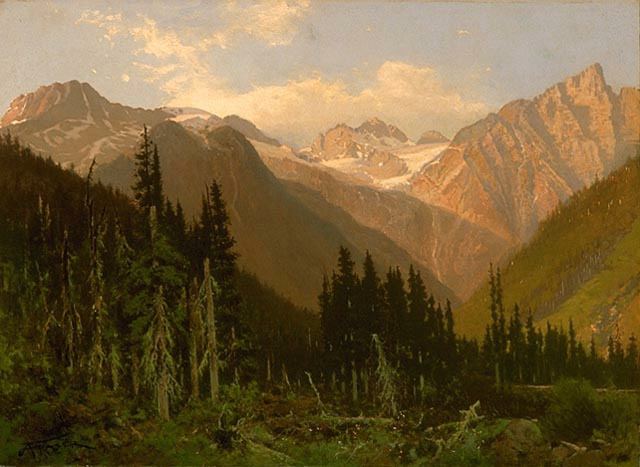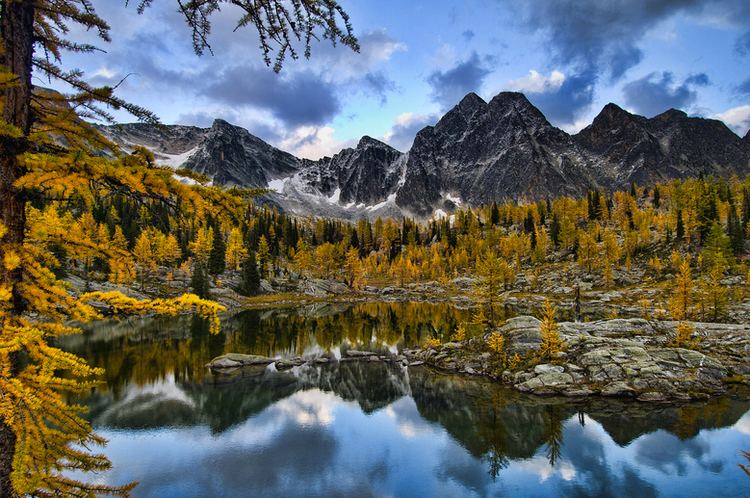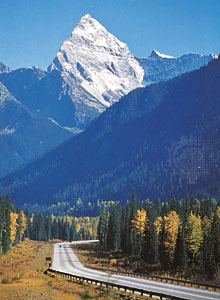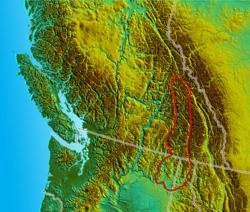Length 525 km (326 mi) NS | Width 175 km (109 mi) EW Elevation 3,519 m | |
 | ||
Mountains Mount Sir Sandford, Mount Sir Donald, Gypsy Peak, Mount Spokane, Abercrombie Mountain Similar Rogers Pass, Lake Pend Oreille, Mount Sir Donald, Revelstoke Mountain Resort, Arrow Lakes | ||
The Selkirk Mountains are a mountain range spanning the northern portion of the Idaho Panhandle, eastern Washington, and southeastern British Columbia. They begin at Mica Peak near Spokane and extend approximately 320 km north (200 miles) from the border to Kinbasket Lake, at the now-inundated location of the onetime fur company post Boat Encampment. The range is bounded on its west, northeast and at its northern extremity by the Columbia River, or the reservoir lakes now filling most of that river's course. From the Columbia's confluence with the Beaver River, they are bounded on their east by the Purcell Trench, which contains the Beaver River, Duncan River, Duncan Lake, Kootenay Lake and the Kootenay River. The Selkirks are distinct from, and geologically older than, the Rocky Mountains. Together with the neighboring Monashee and Purcell Mountains, and sometimes including the Cariboo Mountains to the northwest, the Selkirks are part of a larger grouping known as the Columbia Mountains. A scenic highway loop, the International Selkirk Loop, encircles the southern portions of the mountain range.
Contents

The Selkirks were named after Thomas Douglas, 5th Earl of Selkirk.
History
In 1857 gold was discovered in the Selkirks. Coal, copper, marble, mercury, silver, and zinc were also found in the mountains. During the development of Western Canada, the Selkirks presented a formidable barrier to the construction of the Canadian Pacific Railway, until A.B. Rogers discovered the mountain pass that bears his name in 1881–1882. As a result of the railway's construction via that route, Mount Revelstoke and Glacier National Parks (Canada) in the heart of the Selkirks were among the first national parks created in Canada, along with Yoho, and Banff National Parks in the Rockies. Until the completion of the Trans-Canada Highway via the Rogers Pass, automotive traffic between most of British Columbia and the rest of Canada necessarily was forced to follow the path of the Columbia River via its Big Bend, around the north end of the Selkirks.
Fauna

The southern end of these mountains is home to the only extant woodland caribou population in the contiguous United States. This area, some of it protected in Washington's Salmo-Priest Wilderness, is also home to mule deer and white-tailed deer, elk, black bears, cougars, bobcats, red fox, bald eagles, golden eagles, osprey, great blue heron, porcupine, badgers, coyote, martens, bighorn sheep, gray wolves and moose. Formerly rarely seen, grizzly bears are also known to roam through this region.



